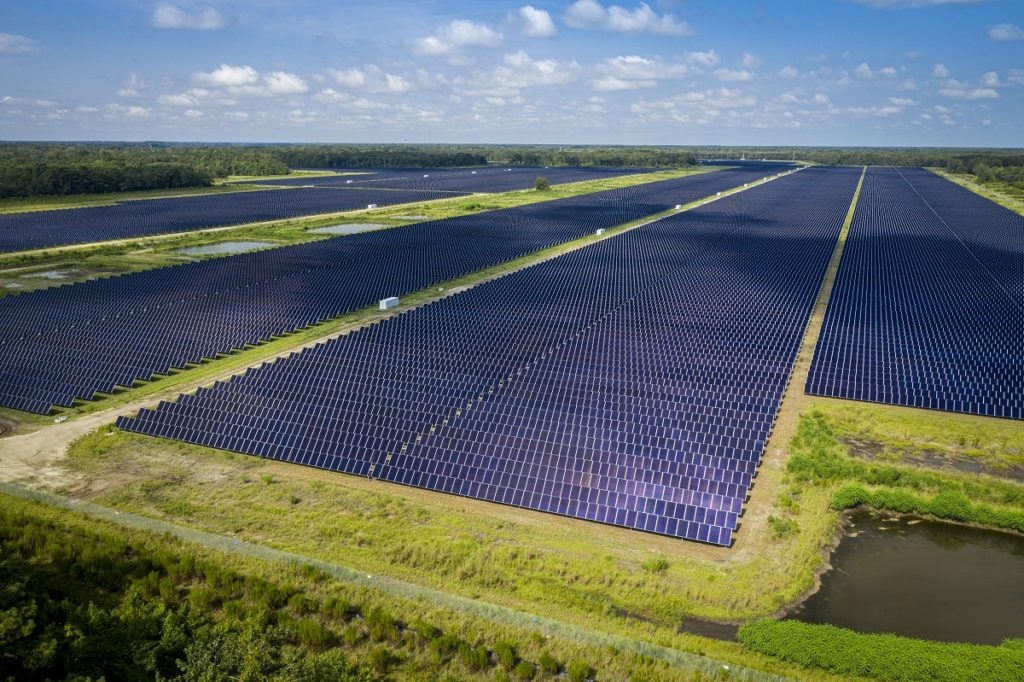
This week, the US Energy Information Administration (EIA), the government body that publishes data on the state of the US power sector, published its latest monthly report on the country’s energy mix. Critically, this month’s data covers the US energy sector up to and including June this year, providing information on power in the first half of the year, and offering ample opportunities to compare the US’ energy performance to other halves and quarters in recent US history.
Many of the takeaways are relatively straightforward, with the US on track for record-breaking levels of electricity generation across the power sectors. In the first half of this year, the US produced 50.3 quadrillion British thermal units (BTU), the most in the first half of a year in history, and putting the US on pace to produce over 100qBTU this year, should it maintain the current levels of production for the remainder of the year, which would be a record figure.
Unlock unlimited access for 12 whole months of distinctive global analysis
Photovoltaics International is now included.
- Regular insight and analysis of the industry’s biggest developments
- In-depth interviews with the industry’s leading figures
- Unlimited digital access to the PV Tech Power journal catalogue
- Unlimited digital access to the Photovoltaics International journal catalogue
- Access to more than 1,000 technical papers
- Discounts on Solar Media’s portfolio of events, in-person and virtual
The contribution of renewable power to the country’s electricity consumption is also encouraging, with the US on track to consume 8.2qBTU of renewable electricity this year, which would be another record figure. While the US is on pace to consume 76qBTU of fossil fuels, significantly higher than the contribution of renewables, this would be a decline from the 78.5qBTU consumed in 2022, suggesting that, however slowly, the US power sector is shifting to a greater reliance on renewable energy.
There is similar positivity for the solar sector in particular, with the US on pace to produce 0.84qBTU of electricity from solar sources this year, another record figure. While this is a smaller total than both wind, which is on pace for 1.4qBTU, and hydroelectric power, on track for 0.86qBTU, production of solar electricity has increased at a far more consistent rate than these other energy sources, with interest in building reliable grid infrastructure beginning to yield results.
According to the EIA, the sector has added around 0.1qBTU of solar electricity each year since 2019 to its production totals.
This compares favourably to wind and hydroelectric power, both of which are forecast to produce slightly smaller electricity totals by the end of 2023 according to the EIA figures. While forecasting renewable power generation can be challenging, particularly solar power facilities, which are far more productive in the summer months than winter ones, these figures are encouraging milestones for a sector that has considerably emphasised domestic manufacturing and production in the last year.
Sustained growth in solar consumption
Perhaps the main takeaway for the US solar sector in the first half of this year has been the consistent growth in electricity consumption from solar sources, figures which suggest that US solar production is consistent, and that this electricity is being integrated consistently and reliably into grid infrastructure so it can be used in a similarly consistent manner.
Electricity consumption from solar sources exceeded that from hydroelectric sources in April for the first time this year, with solar consumption reaching 80tBTU, compared to hydroelectric’s 61tBTU. While hydroelectric production increased again the following month, the subsequent decline in hydroelectric consumption in June demonstrates the relative consistency of solar power in the US energy mix.
Much of this sustained growth stems from an increased interest in building grid infrastructure in the US, as the US power sector looks to not only generate electricity from solar sources, but connect it to existing power infrastructure in a way to make this electricity accessible. In April, the US Department of Energy set aside US$52 million in funding for a range of new solar projects, including delivering grid security, and investments such as these may well be reflected in the EIA’s latest figures.
Similarly, while wind boasted the single largest month in terms of contribution to US energy consumption, with 151tBTU of electricity consumed in March, the highest single-month figure since wind consumption reached a record 157tBTU in April 2022, recent declines in wind’s contribution to the US energy mix have brought electricity consumption from wind and solar projects to almost identical levels.
There is also considerable potential for solar to be even more effectively integrated into the US energy grid in the future. The US Federal Energy Regulatory Commission published a final draft of a new programme to reform US grid connectivity policies, following reports that, at the end of last year, 947GW of solar capacity was still waiting for connections to grid infrastructure.
This draft was published in August, so its impacts are not covered by the most recent EIA statistics, and assessments of the long-term impacts of this draft will have to be made once the EIA publishes a report covering another quarter, or half, of the calendar.
Forecasting renewable expansion
Looking further ahead, the sustained growth in the US’ reliance on solar power could see its contribution to the energy mix reach, and be primed to exceed, that of other sectors. As the chart below shows, the solar sector is on pace to generate 856tBTU this year, which would put the sector on par with the hydroelectric industry, which would generate 876tBTU this year, should it continue its current rate of production.
There is also the potential for even more growth in the sector, with a number of projects and initiatives under consideration, but not yet yielding results. Earlier this year, Colorado announced plans to install 4GW of new solar capacity by 2030, which would make the Coloradan solar sector the 11th-largest in the country by capacity.
According to the US Solar Energy Industries Association, Colorado boasted the 25th-most solar capacity in the US in 2022, and the 12th-most as of the second quarter of this year, and the state’s potential growth is an effective demonstration of the impact a willing government can have on a state’s solar sector.
While the wind sector is expected to dominate the US’ renewables mix, on pace to account for 1,554tBTU of US electricity consumption by the end of 2023, the gap between wind and solar is shrinking. In 2015, the difference between electricity consumption from wind and solar was 455tBTU, and increased every year until 2022, when the difference reached 723tBTU.
Yet should the wind and solar sectors continue their current output for the remainder of the year, the difference in production capacity would fall to 698tBTU, as the gap between the two forms of electricity generation falls. Figures from S&P reveal that the US installed less than half of the wind capacity in 2022 than in 2021, as interest in developing new wind projects faltered.
This trend may not continue, however, as the primary piece of legislation driving the expansion of the US solar sector, the Inflation Reduction Act (IRA), could also encourage more growth in the wind sector. Prior to the passing of the IRA, interest in developing new wind projects fell as the prior round of production tax credits began to be phased out in 2021, with projects at which construction began in 2022 receiving no tax benefits.
With wind set to benefit from some of the same domestic manufacturing benefits as solar, following the implementation of the IRA, the recent slowdown in new wind capacity could be reversed, as investors look to back a range of renewable projects in the US.
Residential continues to dominate the small-scale sector
2023 is also on track to be a record for US solar electricity production in both the small-scale, which the EIA defines as projects with a capacity of less than 1MW, and utility-scale sectors. Utility-scale solar generated 79.5 million GWh, which would give a year-end production total of 159 million GWh, an increase over the 144.6 million GWh produced in 2022.
Small-scale solar, meanwhile, has expanded at an even faster rate. In the first half of the year, the small-scale sector generated 36.4 million GWh, putting it on pace to produce 72.8 million GWh in the whole of 2023, which would be the most on record, and significantly higher than the 58.5 million GWh produced in 2022 and 49.1 million GWh produced in 2021.
The small-scale sector also produced more than 7 million GWh in May, and maintained this level of production into June, raising hope that the sector could continue its high level of production into the future. There is optimism in the sector that, especially as the impacts of the IRA are felt across the industry, community solar projects could benefit, and encourage new investments in more community solar projects.
Much of the growth in the small-scale sector has been driven by the residential sub-sector. The US energy grid consumed 83tBTU of electricity from the small-scale residential sub-sector in the first half of this year (as the graph above shows), a figure comparable to the 85tBTU produced in the small-scale sector from the residential, commercial and industrial sub-sectors combined in the first half of 2021.
Even the commercial and industrial sub-sectors have experienced growth in the first half of this year. The commercial sub-sector accounted for 7tBTU in both May and June this year, the first time the sector had produced so much electricity, while the industrial sector produced 2tBTU in June, equivalent to the whole-year production of 2012.
Again, the work of the IRA is significant in these examples, with the tax incentives offered by the law making commercial and industrial much more commercially viable, increasing interest in developing new commercial and industrial projects.







